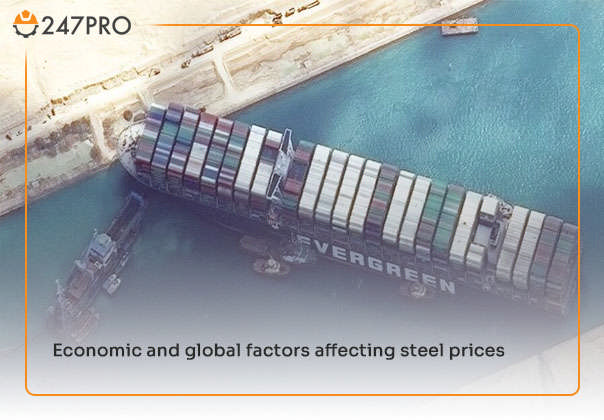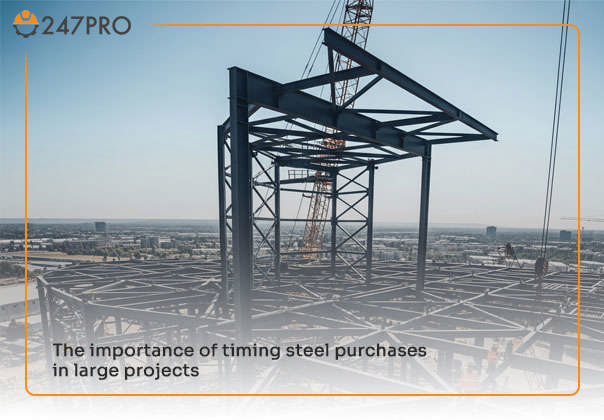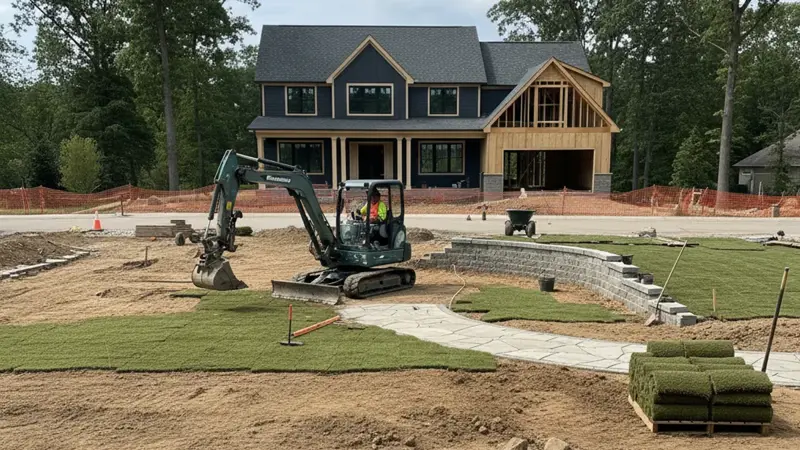Steel is a vital component of modern construction, particularly in the form of new, cost-effective, and environmentally friendly pre-engineered metal buildings (PEMBs). In comparison to other choices, steel is very strong, durable, and faster to build. The cost of using steel, however, can change constantly due to different variables that can directly impact the overall cost of the project.
If you are considering building a steel structure, understanding the factors that influence steel prices can help you have a more realistic estimate of the project’s cost.
Mainly two primary factors can influence steel price, a nd each is divided into other subfactors; these two factors are as follows”
- Economic and Global Factors
- Project-related Attributes
Understanding these two main elements is crucial in having an accurate estimation of the project.

Economic and global factors affecting steel prices
The price of steel is deeply connected to several complex factors at both local and global scales, and most of the time, they are beyond our control.
- Supply and Demand: This is the most basic principle in economics. During certain seasons, the construction industry experiences a global boom, and demand for steel increases, which can subsequently lead to a rise in the process. On the other hand, economic downturn can significantly reduce construction activity and lead to lower prices.
- Raw Material Costs: Steel production depends on iron ore, coal, and scrap metal. Any sudden change in global raw material cost, extraction, and transportation can directly impact the cost of producing steel. For example, in the recent 2024 Suez Canal blockage, ships had to reroute around the Cape of Good Hope, which increases delivery times and fuel costs, ultimately leading to higher steel costs in some periods.
- Energy Costs: It is crystal clear that producing steel is a highly energy-intensive process. The price of oil, gas, and electricity can affect the operational costs of steel production.
- Exchange Rates: For countries that import or export steel or related materials, the exchange rate can alter the final rate.
These factors can significantly impact the cost of steel worldwide, and in many cases, they are beyond our control; however, by understanding and considering them, you can prevent many unexpected financial issues.
Project-related Attributes
These are typically the specific characteristics of your project that can significantly impact the cost of steel and the overall project cost. The good news is that you have some control over these factors and can manage the financial aspects of the project accordingly.
- Size of the Building: A larger building will require a greater volume of steel. Even a small percentage change can result in a significant increase or decrease in total steel costs.
- Type of Steel: Different types of steel can react to market fluctuations in varying ways. For example, common structural steel, such as A36, endures fewer changes compared to specialized alloys like stainless steel or high-strength low-alloy (HSLA) steel.
- Design and Complexity: A simple, pre-engineered metal building uses less steel and fewer connections; on the other hand, a customized or complex design demands specialized tools, materials, and more steel.
- Labor Costs: Labor costs are a significant portion of your project budget. Complex projects often require specialized expertise, which can result in higher labor expenses.

The importance of timing steel purchases in large projects
In large construction projects, proper timing of steel purchases and delivery is a key element that can significantly impact the final cost. Poor timing can lead to considerable savings or losses. All the factors we mentioned above should be taken into consideration for purchasing steel. For example:
- Market Monitoring: If you manage to purchase steel during low-demand periods, such as construction off-seasons, you can spend less money on steel; however, during peak demand, you are forced to pay more.
- Lead Time Planning: Timely delivery is very important in saving money, as it usually takes weeks or months. Ordering time early will require storage, which adds to your cost. However, late delivery can cause delays in the construction process and consequently increase costs.
- Project Phasing: For large or multiphase projects, you can buy in bulk or enter into agreements with steel producers to fix a price for a specific period
Using a steel building cost calculator can be helpful for estimating the steel cost at different times. Considering these factors can significantly help you financially.

Strategies for managing price fluctuation risks
To minimize the impact of steel price changes on the final cost, you can adopt several strategies:
- Fixed-Price Contracts: As mentioned previously, contractors and suppliers can sometimes agree on a fixed price for a specific period. This can significantly decrease the risk of high prices and provide certainty for budgeting purposes.
- Material Escalation Clauses: these clauses are included in the contracts to safeguard against unpredictable cost increases and allow the contractor to adjust the final cost if the prices of raw materials go higher than a specific threshold (e.g., 5% or 10%)
- Diversified Sourcing: If you have a single fixed source for buying steel, even minor issues with tariffs or disruptions can cause significant problems with your project. Therefore, purchase steel from multiple suppliers and even different regions to reduce dependency on a single source.
- Just-in-Time (JIT) Delivery: By using this method, you can have your purchased supplies delivered precisely when they are needed. This method will minimize the cost of storage, as well as any damage or theft to the materials.
- Market Forecasting and Analysis Services: There are some specialized analytical services that can analyze and predict the future price trend in the industry. Getting help from these services can help in making more informed decisions.

Forecasting future steel price trends
Predicting future steel prices is a challenging task due to various visible and invisible factors, some of which are beyond our control. However, paying attention to the key factors that shape steel prices can help you gain a clear picture of the market and, to some extent, predict its direction. For this purpose, you need to pay attention to the following items:
- Global Production Capacity
- Energy Prices
- Global Economic Growth
- Raw Material Costs
- Tariffs and Trade Policies
- Real Estate Boom
For an accurate prediction, it is recommended to consult with construction project management firms and utilize various tools. By predicting future steel prices, you can minimize any upcoming financial issues and establish an accurate budget.


